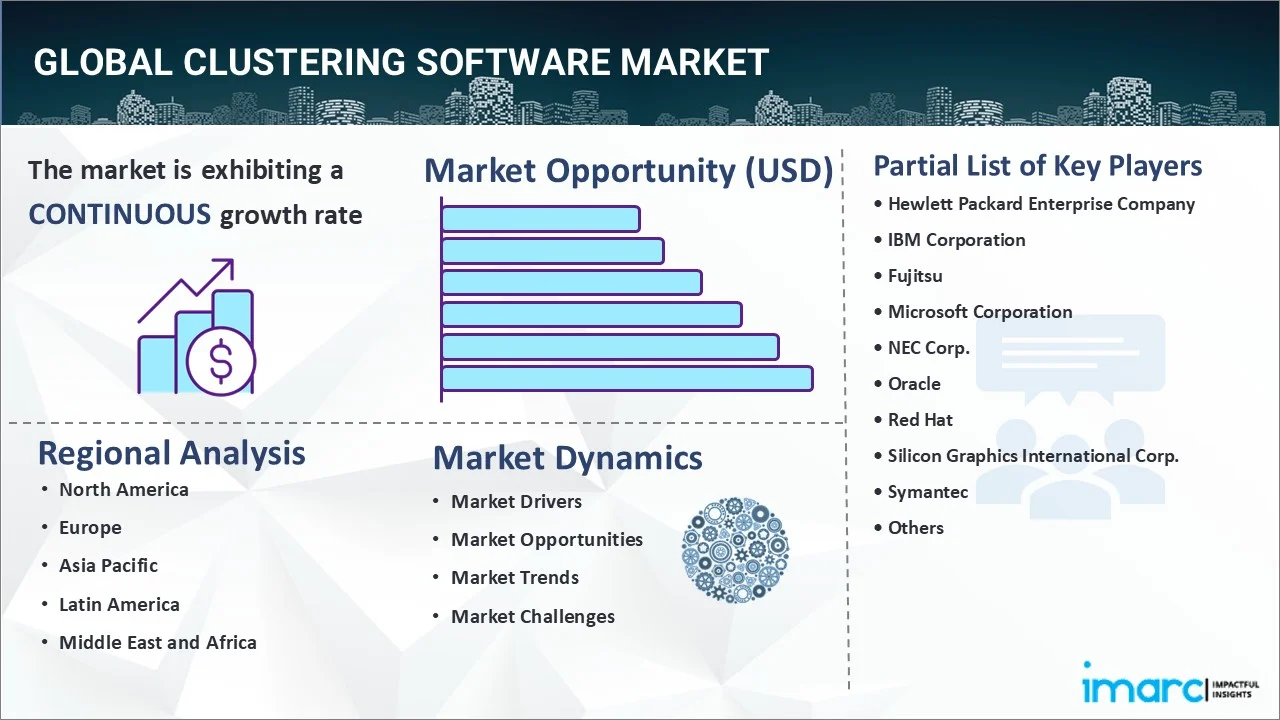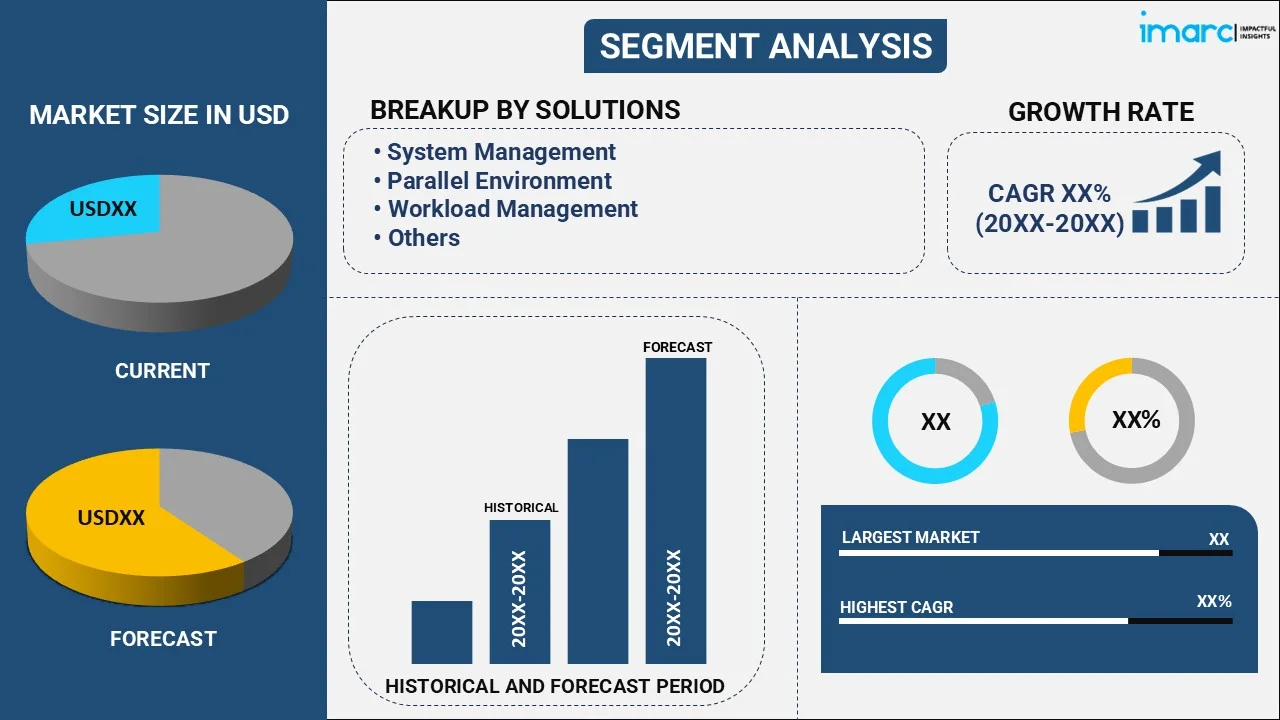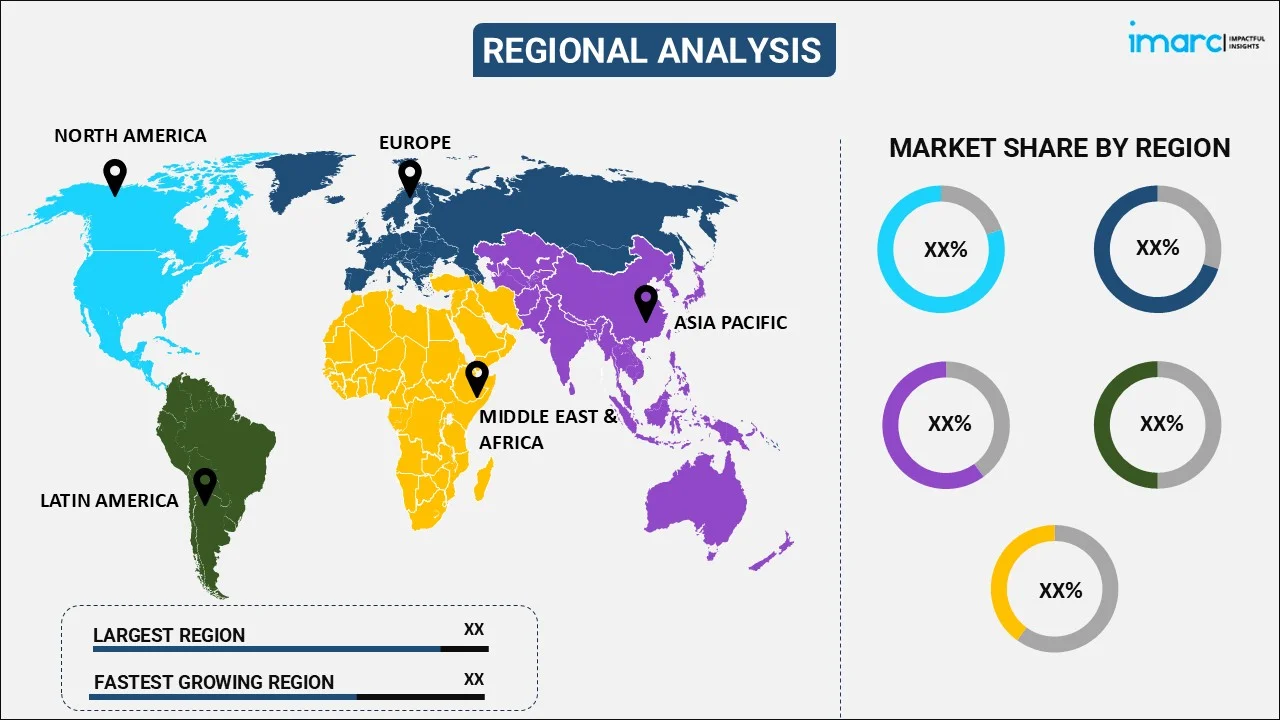
Clustering Software Market Report by Solution (System Management, Parallel Environment, Workload Management, and Others), Component (Professional Services, Software, Licenses), Operating System (Windows, Linux and Unix, and Others), Deployment Type (On-premises, Hosted), End-User (Small & Medium Organizations, Large Organizations), Application (Aerospace and Defense, Academic and Research Institutes, BFSI, Gaming, and Others), and Region 2025-2033
Market Overview:
The global clustering software market size reached USD 3.0 Billion in 2024. Looking forward, IMARC Group expects the market to reach USD 4.1 Billion by 2033, exhibiting a growth rate (CAGR) of 3.22% during 2025-2033.
|
Report Attribute
|
Key Statistics
|
|---|---|
|
Base Year
|
2024
|
|
Forecast Years
|
2025-2033
|
|
Historical Years
|
2019-2024
|
|
Market Size in 2024
|
USD 3.0 Billion |
|
Market Forecast in 2033
|
USD 4.1 Billion |
| Market Growth Rate 2025-2033 | 3.22% |
Clustering software refers to various software-based applications that connect, coordinate and manage multiple distributed servers. Upon installation, servers can collectively perform computing and administrative tasks, including load balancing, determining node failures and assigning failover duties. Clustering software also divides complex software into smaller, easily manageable subsystems and enables efficient data management over large networks to provide fault-tolerant responses. This transforms the entire information technology (IT) infrastructure into a single computing resource, thus enabling server developers, managers and IT professionals to integrate new technologies within the network. Owing to such associated convenience, it finds extensive applications across various industries, including telecom, aerospace, academics, life sciences and defense.

The growing information technology (IT) sector, along with the increasing adoption of cloud computing systems by organizations, is one of the key factors driving the growth of the market. Enterprises are utilizing complex operating systems and software applications that are combined using clustering software to manage the workload virtually and process information to perform tasks effectively. Furthermore, the growing demand from small and medium-sized enterprises (SMEs) and increasing organizational dependence on unified IT infrastructure, are other factors contributing to the market growth. Organizations are adopting virtualized environments as a preventive measure against losses due to downtime, which is further leading to increasing investments in cloud deployments. Additionally, clustering software also provides contingency capabilities such as failovers that enables the organizations to evade unforeseen threats to the network. Other factors, including rapid urbanization, technological advancements and extensive research and development (R&D) activities, are projected to drive the market further.
Key Market Segmentation:
IMARC Group provides an analysis of the key trends in each sub-segment of the global clustering software market report, along with forecasts at the global, regional and country level from 2025-2033. Our report has categorized the market based on solution, component, operating system, deployment type, end-user and application.
Breakup by Solution:

- System Management
- Parallel Environment
- Workload Management
- Others
Breakup by Component:
- Professional Services
- Software
- Licenses
Breakup by Operating System:
- Windows
- Linux and Unix
- Others
Breakup by Deployment Type:
- On-premises
- Hosted
Breakup by End-User:
- Small & Medium Organizations
- Large Organizations
Breakup by Application:
- Aerospace and Defense
- Academic and Research Institutes
- BFSI
- Gaming
- Others
Breakup by Region:

- North America
- United States
- Canada
- Europe
- Germany
- France
- United Kingdom
- Italy
- Spain
- Russia
- Others
- Asia Pacific
- China
- Japan
- India
- South Korea
- Australia
- Indonesia
- Others
- Middle East and Africa
- Turkey
- Saudi Arabia
- Iran
- United Arab Emirates
- Others
- Latin America
- Brazil
- Mexico
- Argentina
- Colombia
- Chile
- Peru
- Others
Competitive Landscape:
The report has also analysed the competitive landscape of the market with some of the key players being Hewlett Packard Enterprise Company, IBM Corporation, Fujitsu, Microsoft Corporation, NEC Corp., Oracle, Red Hat, Broadcom, Inc., VMware, etc.
Report Coverage:
| Report Features | Details |
|---|---|
| Base Year of the Analysis | 2024 |
| Historical Period | 2019-2024 |
| Forecast Period | 2025-2033 |
| Units | Billion USD |
| Segment Coverage | Solution, Component, Operating System, End-User, Application, Region |
| Region Covered | Asia Pacific, Europe, North America, Latin America, Middle East and Africa |
| Countries Covered | United States, Canada, Germany, France, United Kingdom, Italy, Spain, Russia, China, Japan, India, South Korea, Australia, Indonesia, Brazil, Mexico,Turkey, Saudi Arabia, Iran, United Arab Emirates, Argentina, Colombia, Chile, Peru |
| Companies Covered | Hewlett Packard Enterprise Company, IBM Corporation, Fujitsu, Microsoft Corporation, NEC Corp., Oracle, Red Hat, Broadcom, Inc., and VMware |
| Customization Scope | 10% Free Customization |
| Post-Sale Analyst Support | 10-12 Weeks |
| Delivery Format | PDF and Excel through Email (We can also provide the editable version of the report in PPT/Word format on special request) |
Key Questions Answered in This Report:
- How has the global clustering software market performed so far and how will it perform in the coming years?
- What are the key regional markets?
- What has been the impact of COVID-19 on the global clustering software market?
- What is the breakup of the market based on the solution?
- What is the breakup of the market based on the component?
- What is the breakup of the market based on the operating system?
- What is the breakup of the market based on the deployment type?
- What is the breakup of the market based on the end-user?
- What is the breakup of the market based on the application?
- What are the various stages in the value chain of the industry?
- What are the key driving factors and challenges in the market?
- What is the structure of the global clustering software market and who are the key players?
- What is the degree of competition in the market?
Need more help?
- Speak to our experienced analysts for insights on the current market scenarios.
- Include additional segments and countries to customize the report as per your requirement.
- Gain an unparalleled competitive advantage in your domain by understanding how to utilize the report and positively impacting your operations and revenue.
- For further assistance, please connect with our analysts.
 Inquire Before Buying
Inquire Before Buying
 Speak to an Analyst
Speak to an Analyst
 Request Brochure
Request Brochure
 Request Customization
Request Customization




.webp)




.webp)












